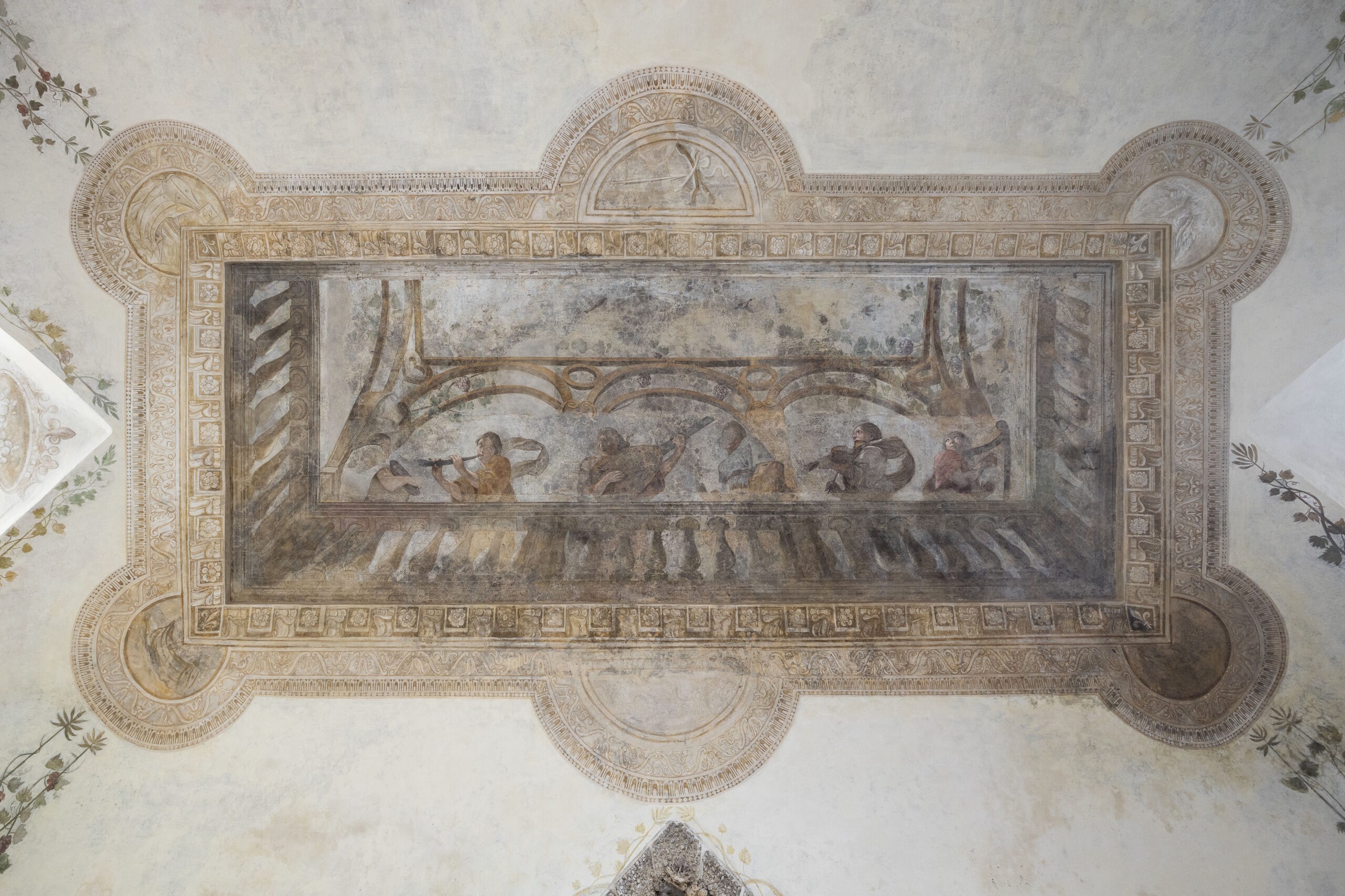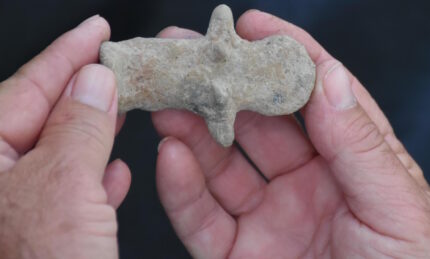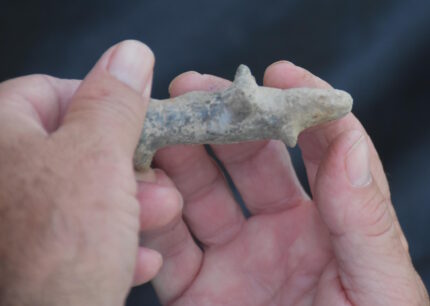* This article was originally published here
GOPAL KRISHNA SAD SONGS 003
GOPAL KRISHNA SAD SONGS 002
GOPAL KRISHNA SAD SONGS 001
ಗುರುವಾರ ಕೇಳಿ ಶ್ರೀ ರಾಘವೇಂದ್ರ ರಕ್ಷಾ ಮಂತ್ರ
LIVE LIVE - The Car Festival Of Lord Jagannath | Rath Yatra | Puri, Odisha
Ad Code
Random Posts
Most Popular
Popular Posts

Is time running out for BBC chair Samir Shah after latest resignation?

Karen Carney: 'We want to make Birmingham proud'
Footer Menu Widget
LIVE - The Car Festival Of Lord Jagannath | Rath Yatra | Puri, Odisha)
PDF Life Edited
PDFLifeEdited
Compress and optimize your PDF files while preserving quality. Perfect for email, web, and storage.
Drag & Drop Your PDF Here
or click to browse files (PDF documents only)
Downscaling
Quality
Format
Advertisement
Google AdSense Ad Unit
Ad Unit ID: YOUR_AD_UNIT_ID
Premium Features
Upgrade to Pro for Batch Processing
Unlock premium features
Fast Compression
Compress PDFs in seconds with our optimized algorithm
Secure & Private
All processing happens in your browser - no server uploads
Mobile Friendly
Works perfectly on all devices and screen sizes
High Quality
Maintain document quality while reducing file size
Optimize Your PDFs for Better Performance
PDF compression is essential for efficient document management. Large PDF files can be difficult to share via email, take up unnecessary storage space, and slow down website loading times. Our free online PDF compressor helps you reduce file size without compromising on quality, making your documents more accessible and easier to share.
Compressed PDFs improve your website's performance metrics, which are crucial for SEO. Search engines prioritize websites that offer excellent user experiences, and fast-loading pages are a key component of that. By using our tool, you can ensure your PDFs are optimized for both desktop and mobile viewing.
Our tool includes advanced image optimization options that allow you to reduce the size of images within your PDF documents. You can choose different compression levels, downscaling options, and output formats to achieve the perfect balance between file size and visual quality.
* This article was originally published here
Horror games: Is the genre in a golden age?
By: SGK ADVERTISING ADDA on October 31, 2023 / comment : 0 BBC News - Entertainment & Arts, news
from BBC News - Entertainment & Arts https://ift.tt/jZOqXiG
Matthew Perry: Friends stars 'devastated' by death
By: SGK ADVERTISING ADDA on October 31, 2023 / comment : 0 films E, news
from BBC News - Entertainment & Arts https://ift.tt/fOjJRBS
Friends stars 'devastated' by Matthew Perry's death
By: SGK ADVERTISING ADDA on October 31, 2023 / comment : 0 BBC News - Entertainment & Arts, news
from BBC News - Entertainment & Arts https://ift.tt/aNcuJni
Planning A Pregnancy? Expert Shares 5 Things You Should Start Right Now!
By: SGK ADVERTISING ADDA on October 31, 2023 / comment : 0 Zee News :Zee News - Health
from Zee News :Zee News - Health https://ift.tt/benBERV
17th c. Nymphaeum of the Rain on the Palatine restored
By: SGK ADVERTISING ADDA on October 30, 2023 / comment : 0

Built in the second half of the 16th century by Cardinal Alessandro Farnese, the Farnese Gardens were the first private botanical gardens in Europe. The Nymphaeum of the Rain was built on the northern slope of the Palatine in the 1600s. was commissioned by Cardinal Odoardo Farnese as a “summer triclinium,” a refuge from the heat of summer in Rome to sup and contemplate surrounded by a fine collection of ancient sculptures.
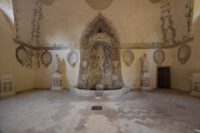
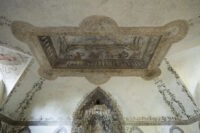
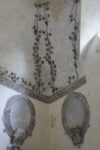
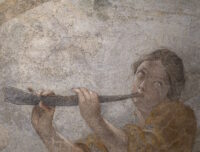
* This article was originally published here
Narayana Murthy's 70-Hour Work-Week Suggestion: Doctor Explains Impact On Health
By: SGK ADVERTISING ADDA on October 30, 2023 / comment : 0 Zee News :Zee News - Health
from Zee News :Zee News - Health https://ift.tt/fxsDbuF
Magic Johnson declared a billionaire by Forbes
By: SGK ADVERTISING ADDA on October 30, 2023 / comment : 0 films E, news
from BBC News - Entertainment & Arts https://ift.tt/wiaktd9
Magic Johnson declared a billionaire by Forbes
By: SGK ADVERTISING ADDA on October 30, 2023 / comment : 0 BBC News - Entertainment & Arts, news
from BBC News - Entertainment & Arts https://ift.tt/7TetcZ4
Matthew Perry death: Stars remember 'brilliant' actor
By: SGK ADVERTISING ADDA on October 30, 2023 / comment : 0 films E, news
from BBC News - Entertainment & Arts https://ift.tt/t2VRnDP
Bronze Age yoke found in northern Italy
By: SGK ADVERTISING ADDA on October 29, 2023 / comment : 0
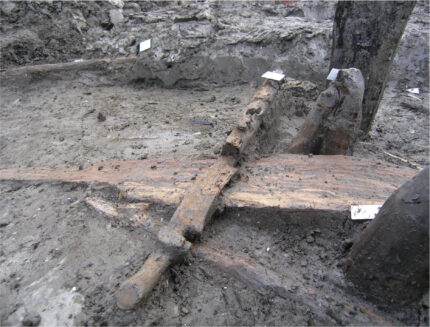
The yoke, other wooden objects, metal ornaments and pottery fragments were discovered in 2015 during an archaeological survey before a new methane pipeline was slated to be laid in the Via Comuna. The area is rich in archaeological remains, hence the investigation along the route of the pipeline expansion, but the presence of a prehistoric Bronze Age settlement was previously unknown. Dendrochronological and radiocarbon dating of the wooden remains revealed the settlement was in use from the middle of the 14th century to the middle of the 13th century B.C. Before this discovery, a smattering of finds from the period had been made in the Este area, but this is the only clearly structured Bronze Age settlement ever found.
The area was a wetland in the Bronze Age (pile dwellings were built over the water), and the muddy conditions preserved organic remains like wood for thousands of years. To stabilize the wet wood in laboratory conditions, sections of soil were removed en bloc and transported to the Central Institute for Restoration in Rome where specialists in the conservation of waterlogged wood performed a painstaking micro-excavation, followed by PEG treatment and a controlled drying to stabilize the wood.
The yoke is the stand-out object of the ones excavated so far. It is a head yoke, used by attaching it to the neck of a pair of draft animals (probably oxen) and securing it to their horns with leather straps or ropes. Curved cut-outs were made to fit the yoke snugly around the animals’ horns.
It was originally estimated to be one meter (3.2 feet long), but about foot of it — the section that was mounted to the second animal of the pair — did not survive the millennia. This is significantly smaller than early modern yokes, evidence that domesticated bovines in the Bronze Age northern Italy were smaller than they would later become. Of particular archaeological interest is an ancient repair to one of the teeth in the yoke beam to which the horns were strapped. It must have broken off during use and the farmer or craftsman dug out a square hole to insert a new tooth.
Another wooden object found in the 2015 excavation is incomplete and of unknown purpose, but it too bears the signs of its crafting. There is a fine, straight line crossing the wide end. This was likely a guide mark for a second element that intended to be joined to it with wooden dowels. (Nails didn’t exist yet.) Two small holes on each end of the line were probably the peg holes.
Two coils of wood discovered in a trench with a fairly chaotic mixture of objects were initially thought to be the bases of woven baskets. The micro-excavation in the laboratory revealed them to be raw material looped for storage, not woven basketry, but perhaps intended for that ultimate purpose.
The excavation and conservation is not over yet. There are more wood artifacts to be discovered in the soil blocks, and more analysis of the objects that have been stabilized to be done. Next on the agenda for the yoke, coils and unknown object is to investigate the place of origin of the wood.
This Italian-language video has excellent shots of the conserved finds and of the pile dwelling remains in situ.
* This article was originally published here
Fingernails: Film asks, what if a machine could find your life partner?
By: SGK ADVERTISING ADDA on October 29, 2023 / comment : 0 films E, news
from BBC News - Entertainment & Arts https://ift.tt/c9PbREJ
Sales Representative | Future Vision For Security Devices
By: SGK ADVERTISING ADDA on October 29, 2023 / comment : 0 IFTTT, Jobs in Saudi Arabia
Public Accountant | Future Vision For Security Devices
By: SGK ADVERTISING ADDA on October 29, 2023 / comment : 0 IFTTT, Jobs in Saudi Arabia
Excessive Screen Time In Childhood May Increase ADHD, Autism Risk: Study
By: SGK ADVERTISING ADDA on October 28, 2023 / comment : 0 Zee News :Zee News - Health
from Zee News :Zee News - Health https://ift.tt/y1cC5b4
Medieval skeleton with prosthetic hand found in Bavaria
By: SGK ADVERTISING ADDA on October 28, 2023 / comment : 0
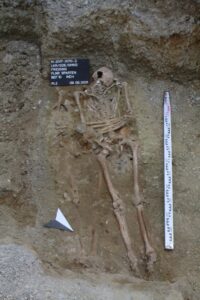
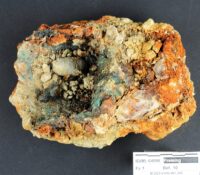
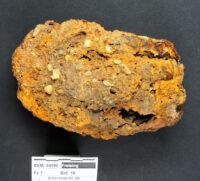

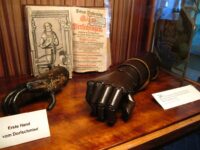
* This article was originally published here
Project Accountant | Atkins Middle East
By: SGK ADVERTISING ADDA on October 28, 2023 / comment : 0 IFTTT, Jobs in Saudi Arabia
Shatta Wale: Why Ghana's 'dancehall king' is trying Afrobeats
By: SGK ADVERTISING ADDA on October 28, 2023 / comment : 0 films E, news
from BBC News - Entertainment & Arts https://ift.tt/1bhZvWp
5,000-year-old mother goddess found in İzmir’s most ancient settlement
By: SGK ADVERTISING ADDA on October 27, 2023 / comment : 0
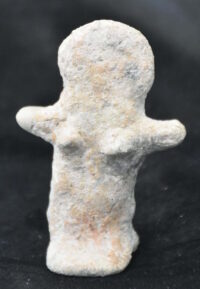
The Yeşilova Mound is the oldest prehistoric settlement in İzmir dating back to 6,500 B.C. Its discovery in 2003 redefined the chronology of human settlement in the İzmir area, pushing it back thousands of years from what was previously thought to be its origins in the 3rd millennium B.C. The mound has been excavated since 2005, revealing four main settlement layers: from the oldest Neolithic level to the Late Roman period. The remains of copious seafood — particularly mussels shells — point to the residents having subsisted largely on the fruits of the nearby Aegean coast.
The female figurine dates to the Bronze Age layer of occupation. The architectural remains from this period are significantly more elaborate. Rectangular structures, believed to be long houses, were built with high stone walls. These structures were heavily damaged in an earthquake 5,000 years ago and were later rebuilt in the next phase of occupation.
The style of the fertility goddess, her gathered hair and outstretched arms, connects the Yeşilova Mound settlement and therefore prehistoric İzmir to other Aegean cultures.
Ege University Faculty of Letters Department of Archeology Lecturer and Head of Excavation Assoc. Dr. Zafer Derin said, “It is important that this artifact was found in a 5,000-year-old settlement. More importantly, similar ones are found in Lesbos.” Island. There are similar ones in the city of Thermi in Lesbos, one of the Aegean islands. There are even more similar ones here. However, the artifact we found belongs to the period 500 years before the ones in Lesbos. This artifact is a cultural interaction between the North Aegean Islands and even the Balkans. “It shows that it is true,” he said.
* This article was originally published here
Senior Engineer | Saudi Aramco
By: SGK ADVERTISING ADDA on October 27, 2023 / comment : 0 IFTTT, Jobs in Saudi Arabia
Taylor Swift's 1989: Her biggest album returns with new tracks from the vault
By: SGK ADVERTISING ADDA on October 27, 2023 / comment : 0 BBC News - Entertainment & Arts, news
from BBC News - Entertainment & Arts https://ift.tt/0GerYnI
Accounting & Tax Client Advisor / Sales | A Leading Company in UAE
By: SGK ADVERTISING ADDA on October 27, 2023 / comment : 0
source http://www.gulftalent.com/uae/jobs/accounting-tax-client-advisor-sales-392764?utm_source=feed_subscriber&utm_medium=referral&utm_campaign=rss_feed
The Gunfight at the O.K. Corral Becomes Legend
By: SGK ADVERTISING ADDA on October 26, 2023 / comment : 0
* This article was originally published here
Glastonbury Festival: Emily Eavis lines up 'really big' US artist for 2024
By: SGK ADVERTISING ADDA on October 26, 2023 / comment : 0 BBC News - Entertainment & Arts, news
from BBC News - Entertainment & Arts https://ift.tt/XjoOx5h
Why artist David Shrigley has pulped 6,000 copies of The Da Vinci Code
By: SGK ADVERTISING ADDA on October 26, 2023 / comment : 0 films E, news
from BBC News - Entertainment & Arts https://ift.tt/uv529ap
BBC chief grilled by Conservative MPs over Israel-Gaza coverage
By: SGK ADVERTISING ADDA on October 26, 2023 / comment : 0 films E, news
from BBC News - Entertainment & Arts https://ift.tt/iuBh62o
BBC chief grilled by Conservative MPs over Israel-Gaza coverage
By: SGK ADVERTISING ADDA on October 26, 2023 / comment : 0 BBC News - Entertainment & Arts, news
from BBC News - Entertainment & Arts https://ift.tt/8fuElsP
Rare 5,000-year-old tomb found in Orkney
By: SGK ADVERTISING ADDA on October 25, 2023 / comment : 0

This masterpiece of prehistoric construction was almost destroyed without a trace. It is flat now, the towering height that once would have dominated the landscape lost to stone thieves in the 18th and 19th centuries. Then in 1896, the son of a local farmer dug around the site, uncovering some remains of walls, a macehead and ball and eight skeletons. The finds were reported in a local paper as the ruins of a “chambered cairn,” but it was a passing reference with no specific location information.

Dr Anderson-Whymark said: […]
“It’s incredible to think this once impressive monument was nearly lost without record, but fortunately just enough stonework has survived for us to be able understand the size, form and construction of this tomb.”
Dr Anderson-Whymark said 5,000 years ago, the tomb would have been a prominent feature on the landscape, and likely to have looked similar to Orkney’s Maeshowe chambered cairn.
He said it was possible further discoveries, including more skeletons, could be made at Holm.
Prof Cummings said: “The preservation of so many human remains in one part of the monument is amazing, especially since the stone has been mostly robbed for building material.
“It is incredibly rare to find these tomb deposits, even in well-preserved chambered tombs and these remains will enable new insights into all aspects of these peoples’ lives.”
The human remains will be DNA-tested to discover if there are familial relationships between the people buried in the tomb. The tomb appears to have been used over a stretch of time, with bodies placed on top of older ones. Radiocarbon dating may answer how long the tomb was in active use.
* This article was originally published here
V&A: Elton John and David Furnish's photography collection to go on display
By: SGK ADVERTISING ADDA on October 25, 2023 / comment : 0 BBC News - Entertainment & Arts, news
from BBC News - Entertainment & Arts https://ift.tt/OD1CqnG
Britney Spears: 'It's refreshing to see her in control', say fans
By: SGK ADVERTISING ADDA on October 25, 2023 / comment : 0 BBC News - Entertainment & Arts, news
from BBC News - Entertainment & Arts https://ift.tt/RDfyMmv
Britney Spears: 'It's refreshing to see her in control', say fans
By: SGK ADVERTISING ADDA on October 25, 2023 / comment : 0 films E, news
from BBC News - Entertainment & Arts https://ift.tt/ZlVNrgY
‘Hunting the Falcon’ by John Guy and Julia Fox review
By: SGK ADVERTISING ADDA on October 24, 2023 / comment : 0
* This article was originally published here
Britney Spears' memoir is an angry, cautionary tale
By: SGK ADVERTISING ADDA on October 24, 2023 / comment : 0 BBC News - Entertainment & Arts, news
from BBC News - Entertainment & Arts https://ift.tt/pykRVHu
General Accountant | AccorHotels
By: SGK ADVERTISING ADDA on October 24, 2023 / comment : 0 IFTTT, Jobs in Saudi Arabia
Amanda Abbington: Actress withdraws from Strictly
By: SGK ADVERTISING ADDA on October 24, 2023 / comment : 0 BBC News - Entertainment & Arts, news
from BBC News - Entertainment & Arts https://ift.tt/jFR4KEQ
Amanda Abbington: Actress withdraws from Strictly
By: SGK ADVERTISING ADDA on October 24, 2023 / comment : 0 films E, news
from BBC News - Entertainment & Arts https://ift.tt/Tfm1e3y
How to Leave the House of Lords
By: SGK ADVERTISING ADDA on October 23, 2023 / comment : 0
* This article was originally published here
Shirley Bassey means other black stars 'forgotten', say musicians
By: SGK ADVERTISING ADDA on October 23, 2023 / comment : 0 films E, news
from BBC News - Entertainment & Arts https://ift.tt/k67daBn
James Blunt on his 'made-up' memoir, Carrie Fisher and losing a child
By: SGK ADVERTISING ADDA on October 23, 2023 / comment : 0 BBC News - Entertainment & Arts, news
from BBC News - Entertainment & Arts https://ift.tt/gCGehOi
James Blunt on his 'made-up' memoir, Carrie Fisher and losing a child
By: SGK ADVERTISING ADDA on October 23, 2023 / comment : 0 films E, news
from BBC News - Entertainment & Arts https://ift.tt/kJE80Xq
Long-rumored looted hoard recovered, transferred to museum
By: SGK ADVERTISING ADDA on October 22, 2023 / comment : 0
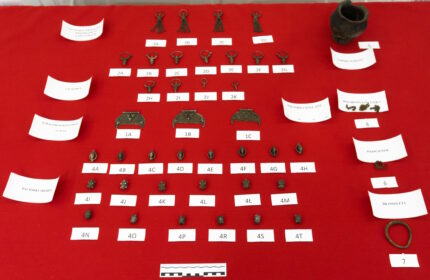
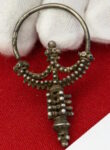

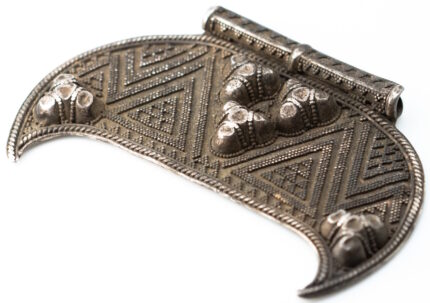
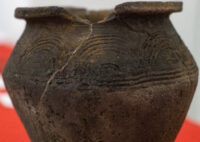
There had been rumors that a medieval treasure had been illegally excavated in the Brańsk area in the 1990s, but only in 2022 did conservation authorities get a tip about the treasure’s whereabouts. They alerted law enforcement and the subsequent investigation revealed the collection of thousand-year-old jewelry was in the hands of a Brańsk resident who claimed he had received them from his wife’s grandfather. The grandfather-in-law told him he had personally found the hoard in the ruins of a castle dating to the 11th-14th centuries.
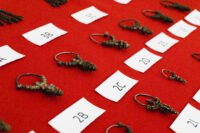
The hoard was officially delivered to the Podlaskie Museum by the Podlasie Provincial Conservator of Monuments on Wednesday, October 18th.
“This is a unique set of monuments,” Aleksander Piasecki, an archaeologist from the Podlasie Museum, told PAP. He emphasized that he had not seen such a well-preserved set of monuments and – as he added – “it is a nicely preserved complex from the second half of the 10th century associated with contacts with Russia.”
The archaeologist noted that now this unique complex will be subjected to specialist research and conservation in order to determine the origin and chronology of the monuments. He added that the archeology department would then like to display the jewelry; is to be included in the permanent exhibition.
* This article was originally published here
Senior Inside Sales Coordinator | WorleyParsons
By: SGK ADVERTISING ADDA on October 22, 2023 / comment : 0 IFTTT, Jobs in Saudi Arabia
Project Accountant | Atkins Middle East
By: SGK ADVERTISING ADDA on October 22, 2023 / comment : 0 IFTTT, Jobs in Saudi Arabia
Prince's Diamonds and Pearls: An oral history
By: SGK ADVERTISING ADDA on October 22, 2023 / comment : 0 films E, news
from BBC News - Entertainment & Arts https://ift.tt/V7MsnfF
Prince's Diamonds and Pearls: An oral history
By: SGK ADVERTISING ADDA on October 22, 2023 / comment : 0 BBC News - Entertainment & Arts, news
from BBC News - Entertainment & Arts https://ift.tt/TUkm1L3
Unique Roman sandal found in well in Spain
By: SGK ADVERTISING ADDA on October 21, 2023 / comment : 0
A Roman-era leather sandal with a unique decoration has been discovered in an ancient well at Lugo de Llanera, Asturias, northwestern Spain. The sandal is decorated with circles, ovals and bird-shaped figures. Roman sandals are rare finds in Spain. Only 20 are known, and this is the only one with decoration.
What would become the Roman city of Lucus Asturum was founded as the fortified capital of the Luggones people. It rose to prominence at the time of the Flavian dynasty (69-96 A.D.) as a mansio, an official rest stop on a Roman road administered by the government for the benefit of traveling dignitaries and officials. Lucus Asturum was located at the intersection of the two major Roman roads that transected the Asturias region, so it was a hub of travel, administration and communications between the 1st and 4th century A.D.
It has not been excavated thoroughly, however. The first excavations were commissioned in the 1930s, but none of the material recovered or documentation from those first digs have survived. and there is still debate as to the size and population of the ancient city. There were a few digs after that, but nothing comprehensive until the town council funded a new excavation program led by archaeologist Esperanza Martín in 2018. Martin’s team began excavations at the La Morgal recreational area. They uncovered the first remains of a Roman bath at Lucus. It was in use until the 3rd century A.D.

Excavations resumed this summer with the well as a particular focus. The sandal was discovered in an excellent state of preservation thanks to the anaerobic waterlogged silt at the bottom of the well.
“The remains we found, due to the anoxia generated by the high water table in the area, are in an exceptional state,” says Martín. “The silts have created an anaerobic environment thanks to the plasticity of the clays that compose them, so the organic materials have been perfectly preserved.” At a depth of about three meters, the specialists extracted part of the wooden cover of the well, a tiled floor for the decantation of silts, several jars, seeds, chestnuts, pine nuts, mollusks, the remains of domestic and wild fauna, an acetre, or bronze, cauldron, a small metal ring and the sandal, among other objects. “It is almost complete and retains the cutting notches to hold it in the upper leg area. It is more than likely that it was lost by someone who came in to clean [the well] when it got caught in the silt. It is a unique object as it is decorated.”
The footwear is currently refrigerated to avoid degradation until it can be restored and exhibited in the Archaeological Museum of Asturias. The sandal will thus tell visitors the story of how 2,000 years ago, a rather well-dressed individual descended into a well in Lucus Asturum to extract the mud that was spoiling the water supply to his home.
* This article was originally published here
Non-Metallic Engineer | Saudi Aramco
By: SGK ADVERTISING ADDA on October 21, 2023 / comment : 0 IFTTT, Jobs in Saudi Arabia
Baby Skin Care: Must Have Essentials For Protecting Baby’s Skin In Changing Weather- Check Expert Tips
By: SGK ADVERTISING ADDA on October 21, 2023 / comment : 0 Zee News :Zee News - Health
from Zee News :Zee News - Health https://ift.tt/VTaKAZE
Weight Management: 7 Yoga Asanas To Reduce Belly Fat
By: SGK ADVERTISING ADDA on October 21, 2023 / comment : 0 Zee News :Zee News - Health
from Zee News :Zee News - Health https://ift.tt/pa1NCxs
Super Mario Bros game Wonder a 'notebook of chaos', critics say
By: SGK ADVERTISING ADDA on October 21, 2023 / comment : 0 films E, news
from BBC News - Entertainment & Arts https://ift.tt/Eecrndl
Crusader sword, cemetery found in Finland
By: SGK ADVERTISING ADDA on October 20, 2023 / comment : 0
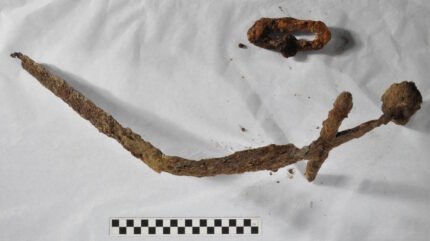
The sword was discovered by a local landowner in late August of this year. He spied a piece of an iron object jutting out of the soil of a geothermal pipe trench after heavy rains. When he pulled it out, he saw it was an almost complete sword. He contacted Juha Ruohose, an archaeology professor at the University of Turku who in turn alerted Sanna Saunaluoma, the archaeologist at the Turku Museum Center who is the official in charge of archaeological material for the Salo area.
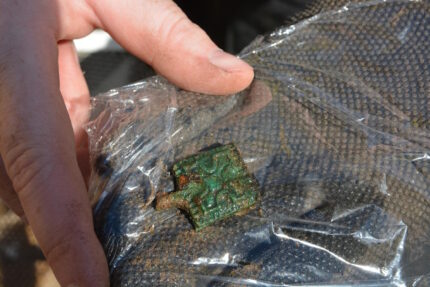
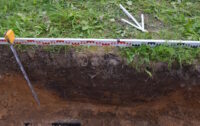
The excavation expanded outward from the sword find site to reveal a larger cemetery. Eight graves were unearthed just from the walls of the pipe trench, and archaeologists estimate the cemetery had dozens more graves, perhaps as many as 200.
Ruohonen says that the discovery can be considered very significant from a research point of view, as far fewer cemeteries containing inhumations from the time of the Crusades are known in Finland than earlier Iron Age cremation grave sites. The deceased in this newly-discovered cemetery were buried in accordance with Christian customs.
“The location of the site, in the immediate vicinity of a medieval stone church, can be considered as evidence of a much earlier church organization in the area than previously believed. It has been thought that Pertteli parish was established with the founding of the Uskela chapel in the 15th century,” Ruohonen points out.
Radiocarbon dating is being carried out on the bone recovered from the site. The belt and a knife sheath are being x-rayed, further studied and conserved.
* This article was originally published here
Berlusconi's 'worthless' art proving a headache to heirs
By: SGK ADVERTISING ADDA on October 20, 2023 / comment : 0 films E, news
from BBC News - Entertainment & Arts https://ift.tt/ZY6jJyi
World War II experimental airplane catapult rediscovered
By: SGK ADVERTISING ADDA on October 19, 2023 / comment : 0

Design work began on the catapult in 1935, the year Germany rearmed in defiance of the Treaty of Versailles. After three years of planning, catapult construction began in 1938, the year Germany invaded Czechoslovakia. It was completed in 1940, the year of the Battle of Britain when 3,000 men of the Royal Air Force kept control of British skies under the brutal onslaught of Hitler’s Luftwaffe.
The advantages to catapulting a bomber plane into the air included saving the fuel expended in takeoff and requiring a much shorter runway than the conventional variety. Even after this project was shut down, the idea of the airplane catapult survived and was deployed with success to launch aircraft from ships.



The construction work at the site will continue and the catapult remains have been dismantled, alas. Before it was removed, the catapult facility was thoroughly photographed and scanned and a 3D digital replica created for future research.
* This article was originally published here
Yunchan Lim: 19-year-old piano sensation signs record deal
By: SGK ADVERTISING ADDA on October 19, 2023 / comment : 0 BBC News - Entertainment & Arts, news
from BBC News - Entertainment & Arts https://ift.tt/UOw05lm
Yunchan Lim: 19-year-old piano sensation signs record deal
By: SGK ADVERTISING ADDA on October 19, 2023 / comment : 0 films E, news
from BBC News - Entertainment & Arts https://ift.tt/RM3ju5N
Nyad: Netflix film follows swimmer who braved sharks and jellyfish
By: SGK ADVERTISING ADDA on October 19, 2023 / comment : 0 BBC News - Entertainment & Arts, news
from BBC News - Entertainment & Arts https://ift.tt/erlxc2R
Nyad: Netflix film follows swimmer who braved sharks and jellyfish
By: SGK ADVERTISING ADDA on October 19, 2023 / comment : 0 films E, news
from BBC News - Entertainment & Arts https://ift.tt/hyu3oXc
Excavation of 6th c. folding chair complete
By: SGK ADVERTISING ADDA on October 18, 2023 / comment : 0

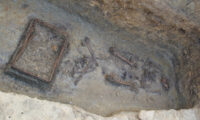


* This article was originally published here
Alec Baldwin could face new charge in Rust shooting, citing 'additional facts'
By: SGK ADVERTISING ADDA on October 18, 2023 / comment : 0 BBC News - Entertainment & Arts, news
from BBC News - Entertainment & Arts https://ift.tt/1H0snEv
Alec Baldwin could face new charge in Rust shooting, citing 'additional facts'
By: SGK ADVERTISING ADDA on October 18, 2023 / comment : 0 films E, news
from BBC News - Entertainment & Arts https://ift.tt/UblcaOJ
Britney Spears says she had abortion when dating Justin Timberlake
By: SGK ADVERTISING ADDA on October 18, 2023 / comment : 0 BBC News - Entertainment & Arts, news
from BBC News - Entertainment & Arts https://ift.tt/aVtdIFb
Britney Spears says she had abortion when dating Justin Timberlake
By: SGK ADVERTISING ADDA on October 18, 2023 / comment : 0 films E, news
from BBC News - Entertainment & Arts https://ift.tt/QlmkMF8
‘Confinement’ by Jessica Cox review
By: SGK ADVERTISING ADDA on October 17, 2023 / comment : 0
* This article was originally published here
Ofcom online safety director suspended over anti-Israel posts
By: SGK ADVERTISING ADDA on October 17, 2023 / comment : 0 films E, news
from BBC News - Entertainment & Arts https://ift.tt/0XhfPnl
Ofcom online safety director suspended over anti-Israel posts
By: SGK ADVERTISING ADDA on October 17, 2023 / comment : 0 BBC News - Entertainment & Arts, news
from BBC News - Entertainment & Arts https://ift.tt/SWRnh0H
Jada Pinkett Smith and Will Smith 'healing relationship'
By: SGK ADVERTISING ADDA on October 17, 2023 / comment : 0 films E, news
from BBC News - Entertainment & Arts https://ift.tt/u342Pke
Jada Pinkett Smith and Will Smith 'healing relationship'
By: SGK ADVERTISING ADDA on October 17, 2023 / comment : 0 BBC News - Entertainment & Arts, news
from BBC News - Entertainment & Arts https://ift.tt/WmKobx7
19th c. fishing boat recovered from downtown St. Augustine
By: SGK ADVERTISING ADDA on October 16, 2023 / comment : 0




The planks will now be stabilized in wet storage. The ultimate goal is to put it on display in a local museum.
* This article was originally published here
Image Compression Tool
ImageCompressor.pro
Reduce your image file size without sacrificing quality. Perfect for websites, social media, and email attachments.
Drag & Drop Your Image Here
or click to browse files (JPG, PNG, WebP supported)
Original Image
Compressed Image
Advertisement
Google AdSense Ad Unit
Ad Unit ID: YOUR_AD_UNIT_ID
Premium Features
Upgrade to Pro for Batch Processing
Unlock premium features
Fast Compression
Compress images in seconds with our optimized algorithm
Secure & Private
All processing happens in your browser - no server uploads
Mobile Friendly
Works perfectly on all devices and screen sizes
High Quality
Maintain visual quality while reducing file size
Optimize Your Images for Better Web Performance
Image compression is essential for website optimization. Large images slow down page loading times, negatively impacting user experience and SEO rankings. Our free online image compressor helps you reduce image file size without noticeable quality loss, making your website faster and more efficient.
Compressed images improve your website's Core Web Vitals scores, which are crucial for SEO. Search engines like Google prioritize websites that offer excellent user experiences, and fast-loading pages are a key component of that. By using our tool, you can ensure your images are optimized for both desktop and mobile viewing.
Our tool supports all modern image formats including JPEG, PNG, and WebP - the next-generation image format developed by Google that provides superior compression compared to traditional formats. Whether you're a web developer, blogger, or social media manager, our image compression tool will help you create faster, more efficient digital content.
Sensational 50% Dhamaka offer
"Exciting news! SriSai Cloth Store in Bidar is currently running a sensational 50% Dhamaka offer! Yes, you read it right - 50% off on a wide range of fabulous. SILK SAREES , FANCY SAREES ,KURTIES, and DRESSES MATERIALS,
This offer is too good to miss, so hurry down to
Sri Sai ClothStore in Bidar today! Don't let this opportunity slip away. Visit us now and grab your favorites before they're gone. Happy shopping!"
Labels
- BBC News
- news
- Zee News - Health
- Zee News :Zee News - Health
- बॉलीवुड | दैनिक भास्कर
- 2021 at 03:38PM
- 2021 at 05:30PM
- 2021 at 05:34PM
- 2021 at 05:36PM
- 2021 at 05:37PM
- 2021 at 05:38PM
- 2023 at 01:52AM maybe not funny / D's jobs / news D's jobs
- 2023 at 02:51PM funny video breaking news #shorts #comedy Just Work done
- 2023 at 07:30PM கேமராவில் பதிவான காட்சிகள் 04 | Funniest Engineering Fails Video Total Idiots at Work Story Bytes Tamil
- 2023 at 07:43PM Part-1 job or kheti funny comedy video by pushpendra and rohit
- 2023 at 12:28AM Total Idiots At Work 2023 #20 | Funny Fails | Bad Day At Work LOL - Lot's Of Laugh
- 2023 at 12:44AM New Short video ... 😘😘💕........#video #news #funny #viralvideos #istighfar #comedy Work Time(3) AH Blog Media
- AajTak Live
- Affiliate Marketing
- Amazon.in Bestsellers: The most popular items in Electronics
- BBC News
- BBC News - Entertainment & Arts
- Bollywood | The Indian Express
- Breaking News Hindi
- Breaking News In Kannada
- Breaking News Latest News
- Breaking News News
- Breaking News News in Kannada
- Breaking News ಕನ್ನಡ | Vijaya Karnataka (ವಿಜಯ ಕರ್ನಾಟಕ)
- Daily Search Trends
- Film
- films E
- GK VIDEOS April 1
- GK VIDEOS February 10
- GK VIDEOS February 19
- GK VIDEOS March 23
- GK VIDEOS May 21
- Health Tips
- HOME
- IFTTT
- JOB NEWS
- JOBS
- Jobs in Saudi Arabia
- Jobs news in Kannada | Jobs in Bengaluru | Employment news in Kannada | Government jobs in Karnataka
- Kannada
- Kannada News: ಕನ್ನಡ ಸುದ್ದಿ
- Latest Kannada News | Kannada News Headlines | Breaking Kannada News | ಕನ್ನಡ ವಾರ್ತೆಗಳು
- Latest News in Kannada
- Movie Reviews News | Vijaya Karnataka
- movies
- National Government Services Portal July 07
- news
- Oneindia.in - thatsKannada News
- Sandalwood News: Kannada Cinema
- sgk
- SGK NEWS ADDA
- SGK NEWS ADDA http://ifttt.com/images/no_image_card.png
- suraj SRP VlOG
- Top CricketNext News- News18.com
- Top Movies News- News18.com
- Top Politics News- News18.com
- YouTube
- Zee News :Zee News - Health
- बॉलीवुड | दैनिक भास्कर
- ಒಂದು ಆರ್ಡಿನರಿ ಲವ್ಸ್ಟೋರಿ
- ತಾಯಿ ನನ್ನ ಜೀವನದ ಅತ್ಯಂತ ಪ್ರಮುಖ ವ್ಯಕ್ತಿ.ತಾಯಿ
- ರಾಜ್ಯೋತ್ಸವ ರಸಪ್ರಶ್ನೆ -೨೦೦೦





